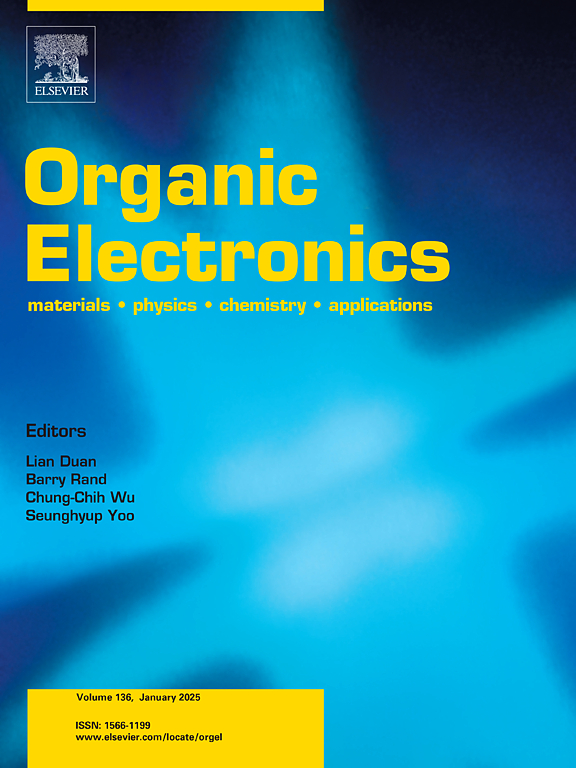Regulation of film morphology and vertical phase separation for inverted organic solar cells via a volatile solvent additive
IF 2.6
4区 工程技术
Q3 MATERIALS SCIENCE, MULTIDISCIPLINARY
引用次数: 0
Abstract
The additives play a vital role in both photovoltaic performance and device stability of organic solar cells (OSCs). Although solvent additives have been extensively utilized in conventional OSC structures to adjust film morphology and regulate crystallization behavior of photoactive materials, their attempt and specific roles in inverted OSCs remain rarely explored. Herein, a kind of halogen-free and volatile solvent additive methyl benzoate (MB) is selected for optimization of the inverted OSCs. It is found that MB could produce distinct positive interaction with L8-BO acceptors, leading to enhanced molecular crystallization and appropriate microstructure in PM6:L8-BO active layers. In addition, the MB-processed PM6:L8-BO films exhibit an optimized vertical phase distribution driven by differences of miscibility between components. The improved horizontal and vertical morphology facilitates charge transport and suppresses charge recombination in the resultant inverted OSCs. Consequently, the power conversion efficiency (PCE) increases from 15.88 % to 17.08 %. Furthermore, the volatile MB with a low boiling point and high vapor pressure could prevent residual in active layers and avoid thermal degradation of OSCs. Benefiting from synergistic effects of the positive volatility and improved acceptor crystallinity, the MB-processed devices demonstrate enhanced thermal stability compared to the control devices. This work highlights the potential of volatile solvent additives for fabricating efficient and stable inverted OSC devices.

挥发性溶剂添加剂对倒置有机太阳能电池薄膜形态和垂直相分离的调控
添加剂对有机太阳能电池的光电性能和器件稳定性起着至关重要的作用。虽然溶剂添加剂已广泛应用于常规盐盐结构中,以调节光活性材料的膜形态和结晶行为,但它们在倒转盐盐结构中的尝试和具体作用仍很少被探索。本文选择无卤挥发性溶剂添加剂苯甲酸甲酯(MB)对倒立OSCs进行优化。发现MB能与L8-BO受体产生明显的正相互作用,从而增强PM6:L8-BO活性层的分子结晶和适当的微观结构。此外,mb处理的PM6:L8-BO薄膜由于组分之间的混相差异而表现出优化的垂直相分布。改善的水平和垂直形态有利于电荷输运,并抑制电荷复合。因此,功率转换效率(PCE)从15.88%提高到17.08%。低沸点和高蒸气压的挥发性MB可以防止活性层残留,避免OSCs的热降解。得益于正挥发性的协同效应和受体结晶度的提高,与控制器件相比,mb加工的器件表现出更高的热稳定性。这项工作强调了挥发性溶剂添加剂在制造高效和稳定的倒转OSC器件方面的潜力。
本文章由计算机程序翻译,如有差异,请以英文原文为准。
求助全文
约1分钟内获得全文
求助全文
来源期刊

Organic Electronics
工程技术-材料科学:综合
CiteScore
6.60
自引率
6.20%
发文量
238
审稿时长
44 days
期刊介绍:
Organic Electronics is a journal whose primary interdisciplinary focus is on materials and phenomena related to organic devices such as light emitting diodes, thin film transistors, photovoltaic cells, sensors, memories, etc.
Papers suitable for publication in this journal cover such topics as photoconductive and electronic properties of organic materials, thin film structures and characterization in the context of organic devices, charge and exciton transport, organic electronic and optoelectronic devices.
 求助内容:
求助内容: 应助结果提醒方式:
应助结果提醒方式:


